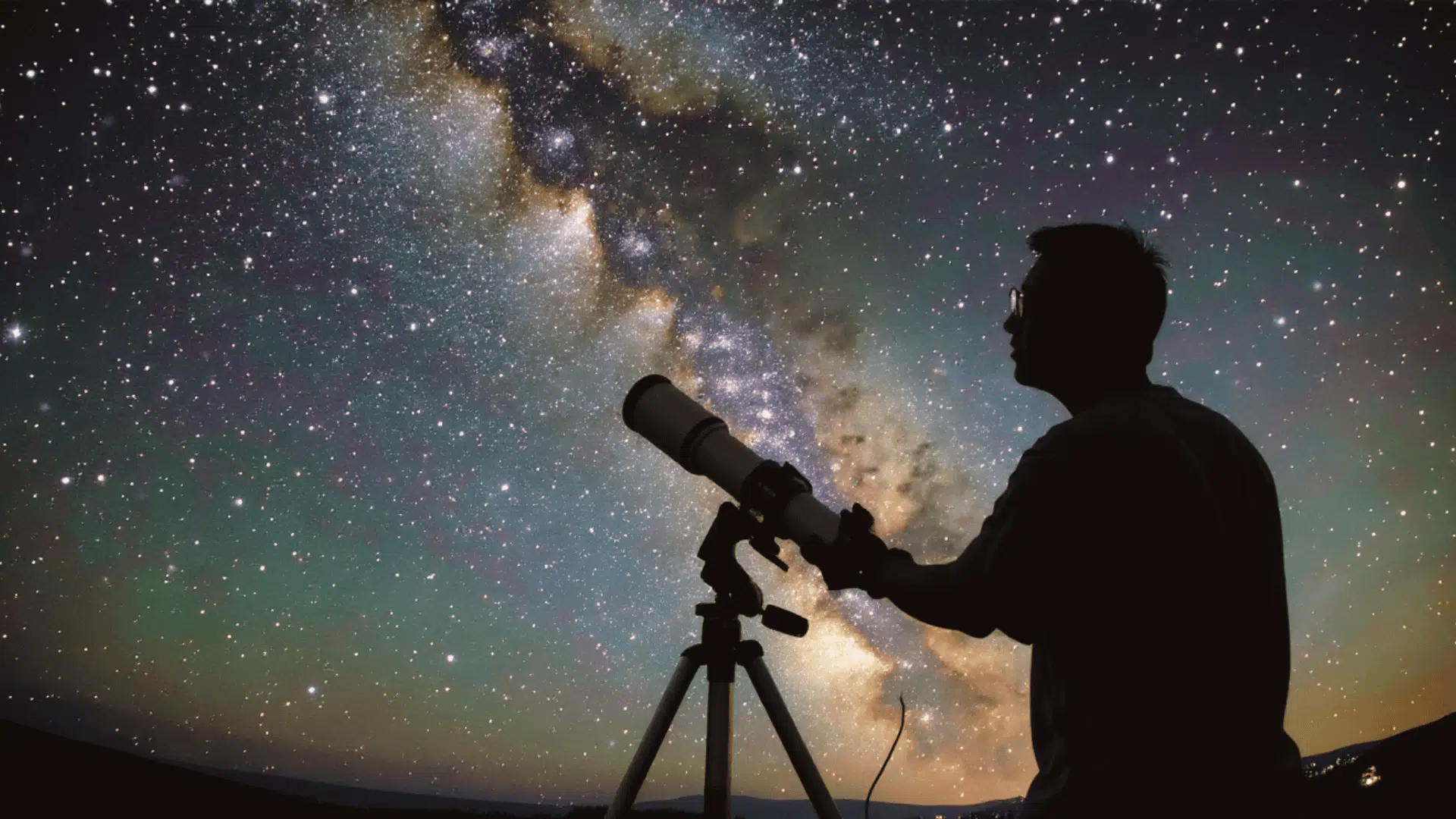When you look up at the stars, it’s natural to wonder what mysteries lie beyond. Astronomy for beginners is easier than most people think. This ancient science doesn’t require fancy equipment or a college degree to start.
Anyone with curiosity and a clear night sky can begin exploring the universe tonight. Identifying constellations, spotting planets, or understanding moon phases starts with simple steps.
This guide offers essential tips and practical resources to help newcomers navigate the night sky with confidence.
Let’s begin this cosmic ride together and learn what makes stargazing so magical.
What is Astronomy, and How Can a Beginner Learn It?
Astronomy is the study of space and everything in it, stars, planets, moons, galaxies, and beyond. It helps us understand how the universe works and where we fit within it.
At its heart, astronomy begins with simple curiosity, looking up and asking, “What’s out there?”
You don’t need to be a scientist or own a telescope to start. All it takes is patience, a bit of guidance, and a sense of wonder.
Astronomy connects us to something much bigger than ourselves. It teaches observation, mindfulness, and appreciation for nature’s vastness.
Most importantly, it reminds us that the night sky is a shared experience, one that anyone, anywhere, can enjoy
Essential Concepts Every Beginner Should Know
Learning a few basic ideas can turn a confusing sky full of dots into a map you can read. Below are some simple terms to get you started:
| Concept | What It Means | Why It Matters |
|---|---|---|
| Stars vs. Planets | Stars make their own light and twinkle. Planets reflect sunlight and shine steadily. | Helps tell stars and planets apart. |
| Constellations | Groups of stars form recognizable patterns. | Makes the night sky easier to navigate. |
| Celestial Sphere | The sky appears to move like a dome, but it’s Earth that’s rotating. | Explains why stars rise and set. |
| Moon Phases | The Moon’s shape changes as it orbits Earth. | Shows the cycle from new to full moon. |
| Light-Years | The distance light travels in a year, about 6 trillion miles. | Explains how vast space really is. |
Getting Started with Stargazing


Beginning the stargazing requires nothing more than curiosity and a willingness to look up. These simple steps will turn any beginner into a confident night sky explorer.
- Find a Dark Location: Choose a spot away from bright streetlights and building lights. A backyard, park, or open field works perfectly for starting out.
- Allow Eyes to Adjust: Sit in darkness for at least 20 minutes without looking at phones or bright lights. This dark adaptation helps eyes see much fainter stars and details.
- Start with the Moon: The Moon is the easiest object to find and shows incredible detail even without equipment. Observe how it changes shape and position throughout the month.
- Learn One Constellation: Begin with an easy pattern like the Big Dipper, which is visible year-round in northern skies. Use it as a guide to find other constellations and navigate the night sky.
- Keep a Simple Journal: Write down what’s seen each night, including the date, time, and weather conditions. This record helps track progress and remember favorite discoveries over time.
Essential Tools and Resources for Learning
The right tools and resources make learning astronomy simple and enjoyable. They help beginners to learn the night sky with confidence.
1. Star Maps and Astronomy Apps
Learning where to look in the night sky is the first step for beginners. Star maps and astronomy apps make this easy by showing what is visible at any given time.
They can guide you to constellations, planets, and even passing satellites. Many apps, such as Stellarium or SkySafari, use your phone’s location to give real-time sky charts.
Paper star maps are also useful for learning patterns. These resources give you confidence and make stargazing less confusing and more rewarding.
2. Binoculars and Beginner Telescopes
When you are ready to go beyond looking with just your eyes, binoculars are a simple way to start.
They are affordable, portable, and provide a closer view of the Moon’s craters, bright planets, and star clusters.
For beginners, binoculars are often more practical than a telescope, since they require less setup and are easier to use.
As your interest grows, a beginner telescope allows you to view details like Saturn’s rings, Jupiter’s moons, and even distant galaxies, expanding your experience of space.
3. Books and Online Guides
Reading books and guides is a great way to understand astronomy at a beginner level.
Books like NightWatch by Terence Dickinson or Turn Left at Orion are written to help beginners find objects in the sky with simple instructions.
Online guides from trusted sources such as NASA or Sky & Telescope also provide up-to-date information about events and discoveries.
These resources help explain astronomy in an easy way, making it possible to learn step by step while enjoying the process of discovery.
4. Local Clubs and Online Communities
Astronomy for beginners becomes more fun when it is shared with others. Joining a local astronomy club gives beginners the chance to meet people who are experienced and eager to help.
Clubs often host star parties where you can use telescopes and learn how to find objects in the sky. Planetariums also offer programs that make astronomy more exciting.
If local groups are not available, online communities and forums connect you with others who share the same interest and provide encouragement as you learn.
The Solar System: Where Your Astronomy Journey Begins


Image Source: UK Posters
Understanding our solar system is important at the beginning. The solar system is our neighborhood in space, comprising the Sun, eight planets, their moons, and numerous smaller objects, such as asteroids and comets.
Learning about these parts helps beginners see how planets move, why the Moon changes phases, and how the Sun’s gravity holds everything together.
This basic knowledge makes the night sky easier to understand and enjoy.
Once you know the workings of our solar system, it becomes simpler to research bigger topics, such as stars, galaxies, and the universe beyond. It is truly the foundation for every astronomy.
What Happens During Astronomical Events
Astronomical events are special happenings in the sky caused by the movement of the Earth, Moon, and planets. These include:
- Meteor Showers: Like the Perseids or Geminids, where streaks of light flash across the sky.
- Eclipses: A lunar eclipse happens when Earth’s shadow covers the Moon; a solar eclipse happens when the Moon blocks the Sun.
- Planetary Alignments: When multiple planets appear close together in the sky, it is a rare and beautiful sight.
Tracking these events makes astronomy exciting and gives you unforgettable viewing experiences. You can find event calendars on sites like NASA or TimeandDate.com.
Conclusion
Starting with astronomy opens a door to endless wonder. By learning a few basic concepts, using simple tools, and observing regularly, you’ll soon feel at home among the stars.
You don’t need expensive equipment, only curiosity, patience, and clear skies.
Every night brings something new to discover: a passing comet, a bright planet, or the quiet beauty of the Milky Way.
So grab a blanket, step outside, and look up. The universe is waiting, and your journey among the stars has just begun.


















